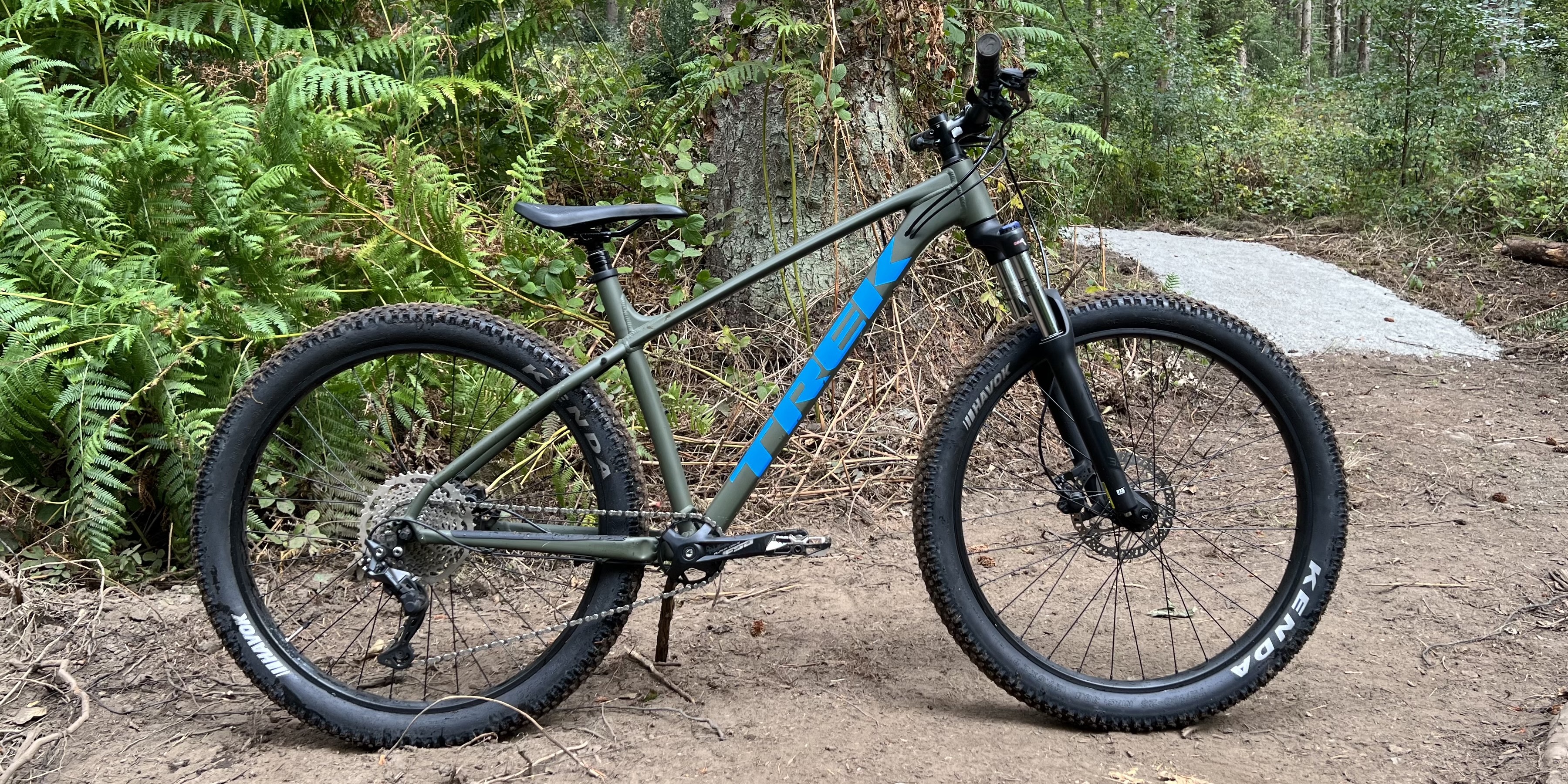Bike Perfect Verdict
Looks good on paper, but the old shape frame and wheels are further undermined by detailing and components that make it heavy, slippery, noisy, and numb on the trail.
Pros
- +
Super wide size range
- +
Dropper post
- +
Tapered head tube
- +
Potential plus tire gains
Cons
- -
Awful fork
- -
Outdated frame
- -
Very heavy
- -
Cable rattle
- -
Numb brakes
- -
Wet hating, tubed plus tires
Why trust BikePerfect
With its dropper post and thru-axle fork Trek’s Roscoe 6 looks like a contender for the best hardtail mountain bikes under $1,500. Unfortunately, the 6 hasn't received the same new frame, geometry, and 29er wheel upgrade as the other models in the Roscoe range leaving it feeling a little dated.
Add a wide range of issues from key component performance to noisy cable routing becomes clear as soon as you start riding.
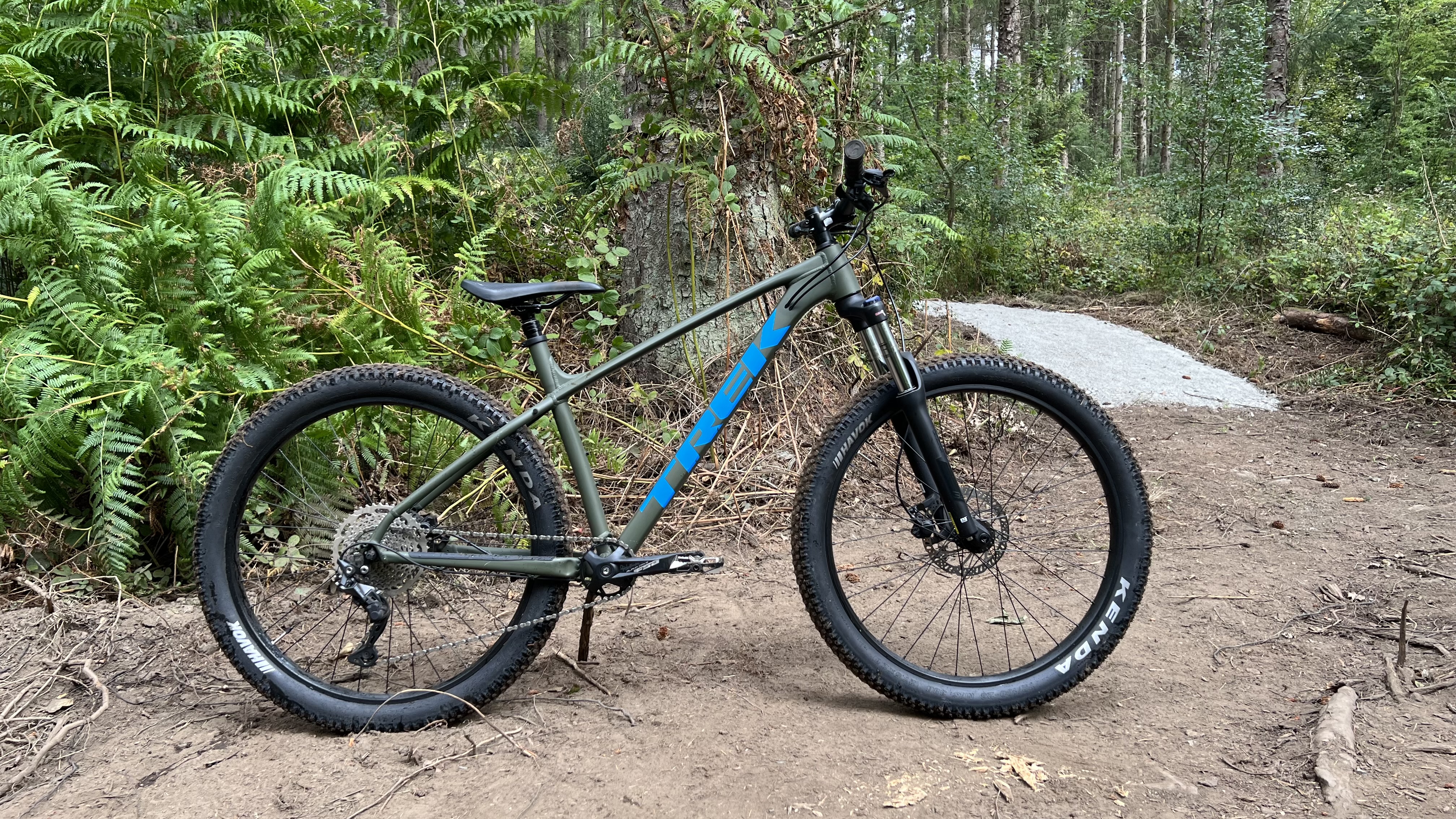
Design and geometry
The old frame certainly isn't all bad. The matt military green, squared downtube frame of the Roscoe looks good in a muscular aggro bike way. The tapered head tube is now a bonus on any bike around this budget since prices started going through the rough a few years ago too. While the frame isn’t bolt through you do get a wider ‘Boost’ 141mm wide QR set up which helps broaden the back end and make room for the big 27.5 x 2.8in plus tires. Good luck trying to find a Boost width QR hub when the original Formula dies though and seeing how rough the bearings felt after just a few hours of riding that might not take long.
The redundant front mech mount stubs and plastic cover for their cable guides are also a giveaway that this is a relatively old frame. Big entry holes let the gear, dropper post, and brake lines rattle loose inside the frame and there’s no real chain stay protection beyond a thin stick on rubber strip either. You get two bottle mount positions inside the mainframe though as well as mounts for a rear rack and kickstand. Useful if your Roscoe is going to be your round town bike as well as your round the trails bike.
The 27.5 x 2.8in plus tires already date the bike when most brands are wholly on 29er and the geometry is behind the curve too. The head angle is steep at 68.6-degrees and the effective seat angle is relatively slack at 73.5-degrees. Even with the smaller diameter 27.5in wheels, the bottom bracket height is also tall for a hardtail at 318mm. The 455mm reach of the large is nearer to a medium model in most contemporary sizes too although that’s irritatingly common on lower-priced bikes. The good news is that Trek produces a wider range of XS - XXL sizing than any other mainstream brand, including an in-betweener M/L size.
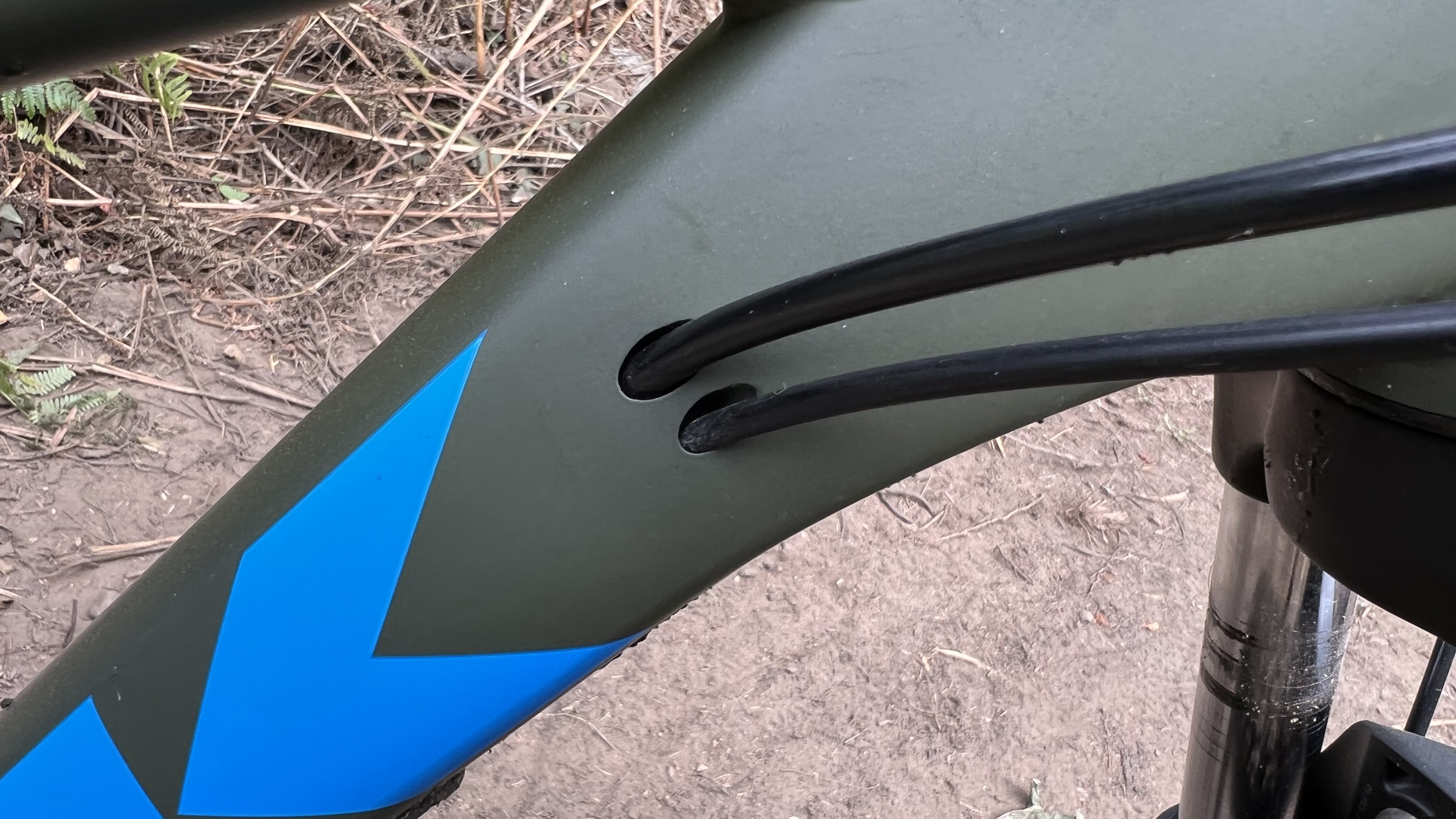
Components and build
The tapered head tube is matched with a tapered steerer fork and the 15mm bolt-thru-axle is a plus in terms of tracking accuracy, security, and wheel upgrading later. Unfortunately, the coil-sprung, non rebound adjustable suspension action is deeply disappointing.
The big Kenda tires and wide Alex rims add weight too and they come with inner tubes rather than being set up tubeless which limits low-pressure options until you add valves and sealant yourself. The Shimano brakes advertised were replaced with numb-feeling Tektro brakes on our sample too. The ten-speed Deore transmission is also at odds with 11-speed sets you’d hope to find at this price and leaves a big lurch into the largest 46-tooth cog. The 28-tooth steel ring on the FSA crank is going to last a long time though as is the Shimano bottom bracket.
As much as I realize it’s normal at this price, it’s still depressing to see a square taper set up rather than a thru-axle crank and bottom bracket design. A dropper post as standard is a real control bonus though, even if the stroke is limited at 130mm on M/L to XXL sizes and 100mm on the XS, S, and M sizes. Bar, stem, and cranks change on the smallest sizes too which helps keep fit coherent.
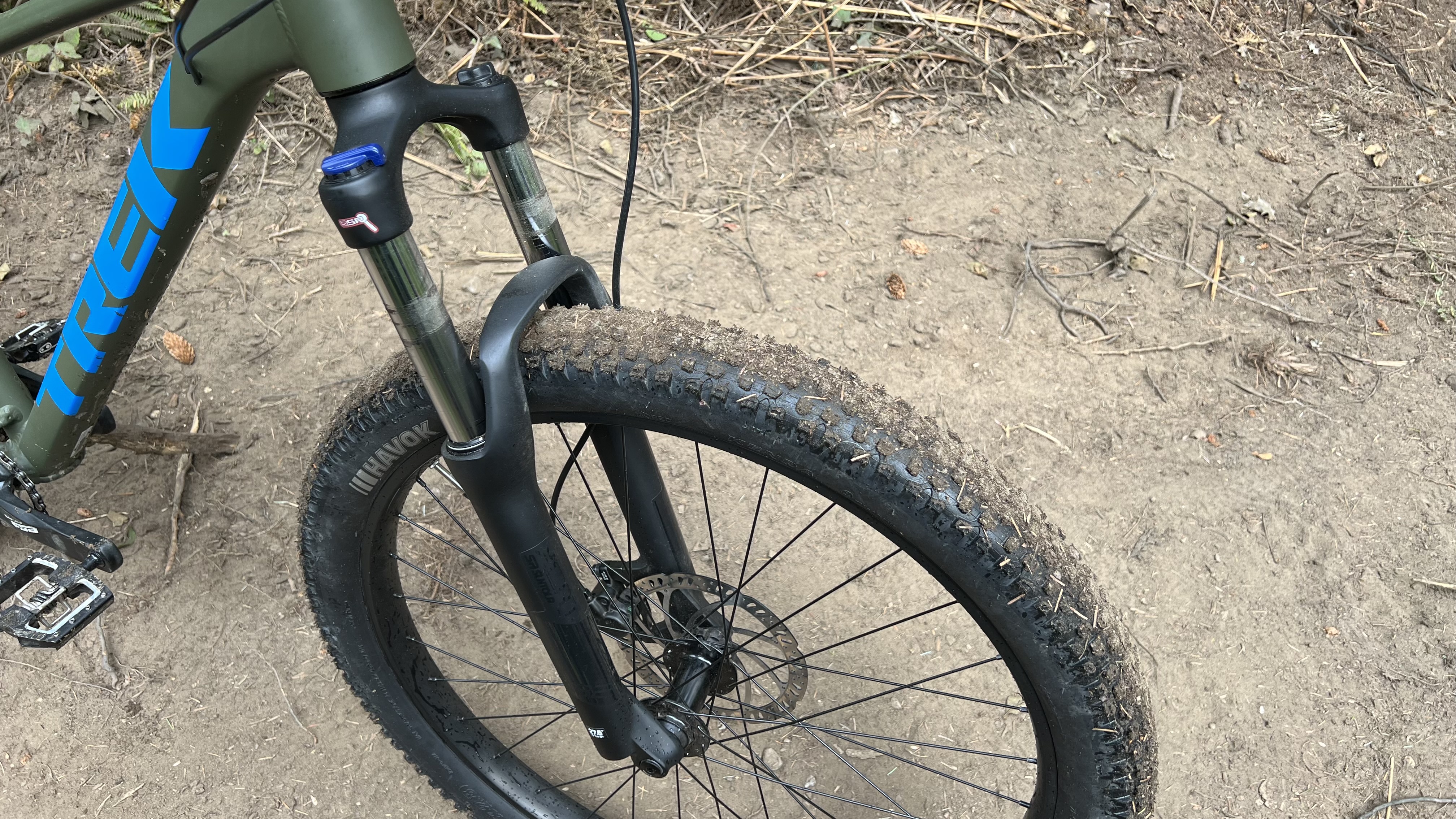
Ride, handling and performance
We’re test-riding a bunch of bikes around the $1000 / £1000 mark at the moment and while the serious downgrading in componentry in the past couple of years is a disappointment, the good news is that most of them still ride pretty well. The bad news for Trek is I can’t really include the Roscoe 6 in that ‘most’ bracket.
The basic fit is OK if not outstanding but it does feel more like a medium-sized bike when compared to other bikes such as the Kona Mahuna and the Specialized Rockhopper. The things that look promising on paper don’t live up to their potential on the trail either.
The Plus tires are hard to accelerate but roll much faster than you might think and amp up the aggro ‘swamper’ vibe of the matte military green frame too. Having tubes in the tires makes it much more of a risk to drop down into teen pressures where the big volume starts to pay dividends in terms of a smoothed ride and compliant grip. That means we’d definitely be looking to turn them tubeless as soon as possible if it was our bike as even at 20 psi the frame felt harsh and unforgiving compared to the 29ers we were testing at the same time. The tiny knobs and hard compound of the Havoks also meant they were a flashback to the old ‘Kenda surprise’ days when sudden massive sideways slides on anything damp were a trademark of the brand. Grippier Plus tires tend to be hard to come by unless you go to the full sticky monster reinforced rubber designed for the back of ‘mullet’ DH and E-bikes where a 27.5in rear tire is mixed with a front 29er.
You could potentially try that setup with the Roscoe to improve steering grip but that would both lift the bottom bracket and slacken the seat tube. Given that the bottom bracket already feels perched and you need to slide right forwards on the saddle on steep climbs that’s not the direction you want to move the geometry in.
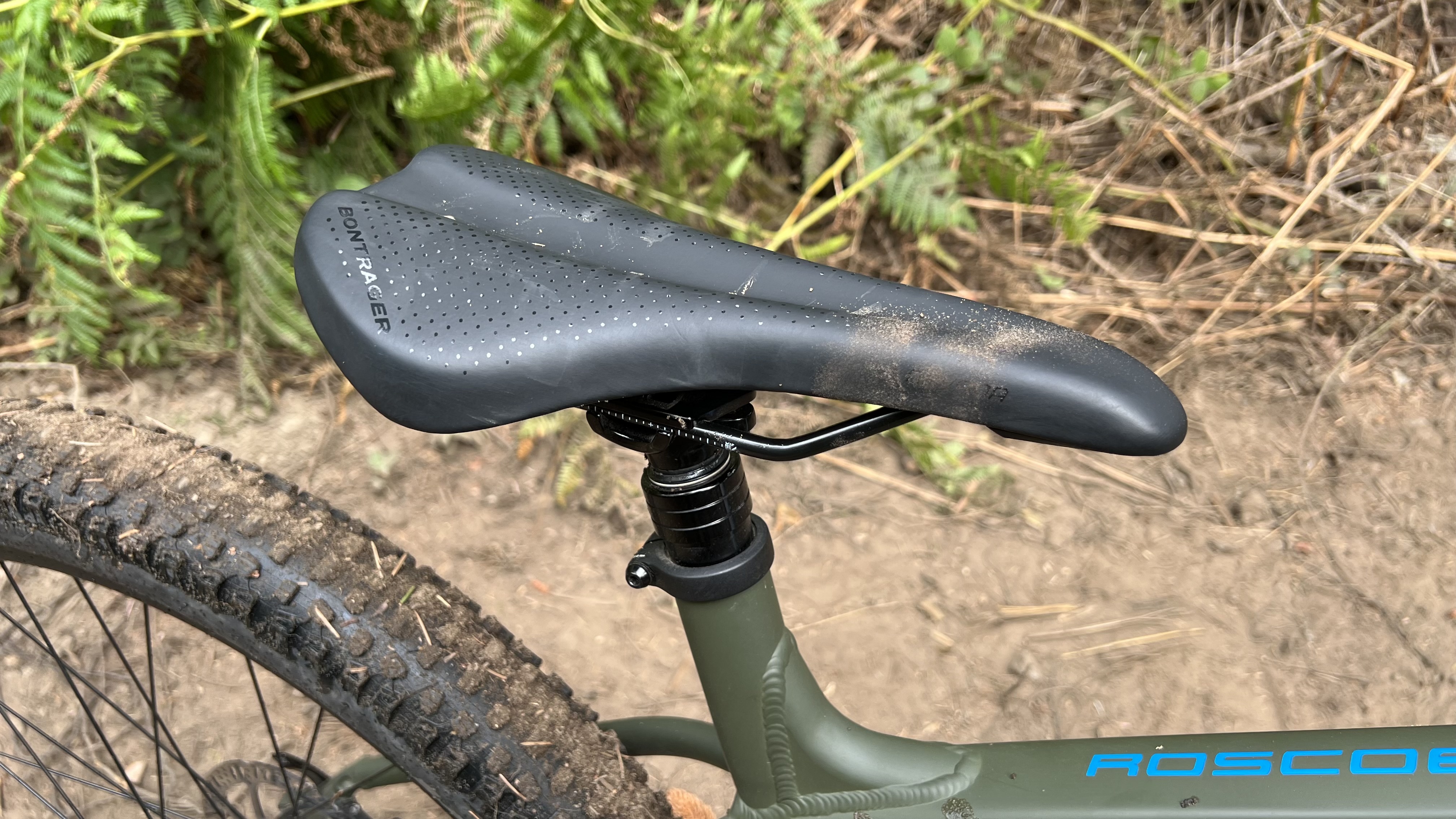
While it’s structurally a step ahead of many forks at this price with its tapered steerer tube and thru-axle dropouts the actual performance of the Suntour is significantly below par. The metal coil spring and rubber bumpers do have a preload dial on top to tune initial sensitivity slightly. It’s very much a token gesture compared to the proper rider weight and terrain tuning you can get from an air-sprung fork though. There’s no adjustment of the rebound rate either so the fork tends to jolt backwards from big impacts. Despite travel being listed as 120mm we never got beyond 100mm of movement out of it and it’s very heavy too. Even when it was chonking down steps and over rooty rocky sections the Roscoe never felt composed. That’s because the brake, gear, and dropper post control lines create a deafening racket as they slap around inside the frame. Even for experienced testers like us, the ‘something is definitely broken’ sensation was hard to screen out. But the less inexperienced riders the Roscoe is likely to be ridden by are going to be scared witless by what sounds like the bike disintegrating under them.
The Tektro brakes lack any sort of meaningful modulation either, making the already hard to keep connected Kenda tires even more likely to slide. Taller ride height and steep head angle theoretically undermine confidence on steeper, technical descents too, although to be honest, the tires had already given up gripping before we could actually confirm that. Climbing is also blighted by the excessive weight, slack seat angle, and awkwardly large second-to-first gear jump of the Roscoe. Although the higher bottom bracket does add pedaling clearance if you’re determined enough to sit and churn it up janky climbs.
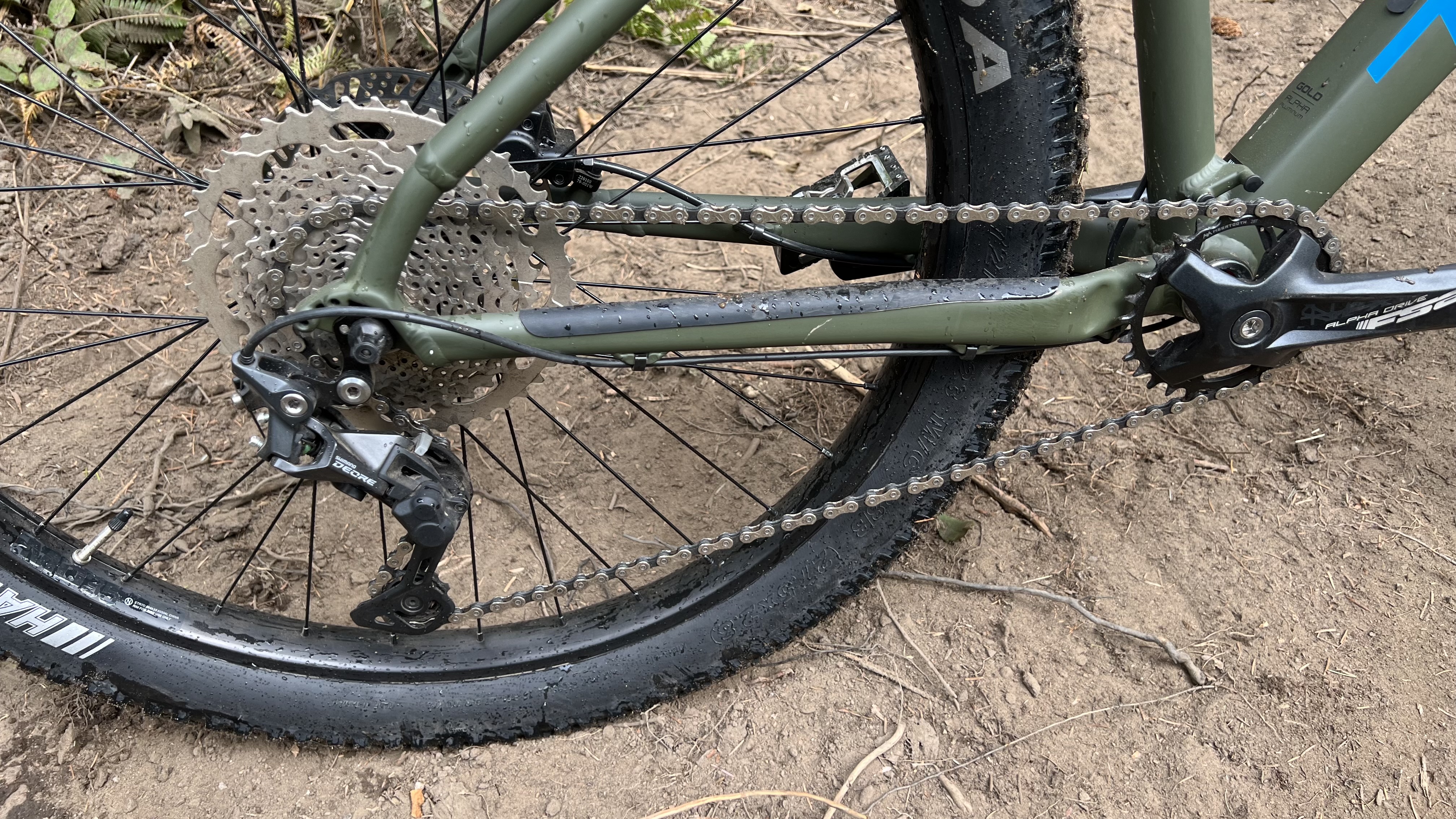
Verdict
There’s no escaping the fact that bikes in this price category have been hit hardest in terms of higher cost/lower spec and we’re having to accept compromises in our expectations. On paper, the Trek looks to have less of those compromises than most, thanks to its tapered head tube and dropper post. Both of those points are a definite bonus too, as is the extensive sizing range Trek offer and for trundling along less challenging trails it's a good-looking bike.
Start hitting stuff harder though and the tires are both slippery and rebound happy, exposing a fork that is already under controlled and under travel even further. The bike slaps around audibly and physically over rougher stuff, the numb brakes and geometry undermine confidence on descents while weight and gappy gears make climbing harder than it needs to be.
Tech Spec: Trek Roscoe 6
- Discipline: Trail
- Price: $1,199.99 / £1,075
- Head angle: 68.6-degree
- Frame material: Alpha Gold alloy
- Fork: SR Suntour XCM 32 15mm axle, 120mm claimed travel
- Size: XS, S, M, M/L, L (tested), XL, XXL
- Weight: 15.57kg (34.33lb)
- Wheel size: 27.5 x 2.8in
- Drivetrain: Shimano Deore 5120 rear mech, M4100 shifter, Shimano Deore M4100, 11-46, 10-speed cassette
- Cranks: FSA Alpha Drive, 28T steel ring, Boost chainset with Shimano square taper bottom bracket
- Brakes: Shimano MT200 hydraulic disc brakes with 180mm front and 160mm rear rotors
- Cockpit: Bontrager 750 x 31.8mm alloy rise bar and 60 x 31.8mm stem
- Wheelset: Alex MD35 rims with Formula hubs
- Tires: Kenda Havok 27.5 x 2.8in tires
- Seatpost: Trans-X 130mm dropper seat post
- Saddle: Bontrager Arvada saddle

Guy Kesteven has been working on Bike Perfect since its launch in 2019. He started writing and testing for bike mags in 1996. Since then he’s written several million words about several thousand test bikes and a ridiculous amount of riding gear. He’s also penned a handful of bike-related books and he reviews MTBs over on YouTube.
Current rides: Cervelo ZFS-5, Specialized Chisel, custom Nicolai enduro tandem, Landescape/Swallow custom gravel tandem
Height: 180cm
Weight: 69kg
